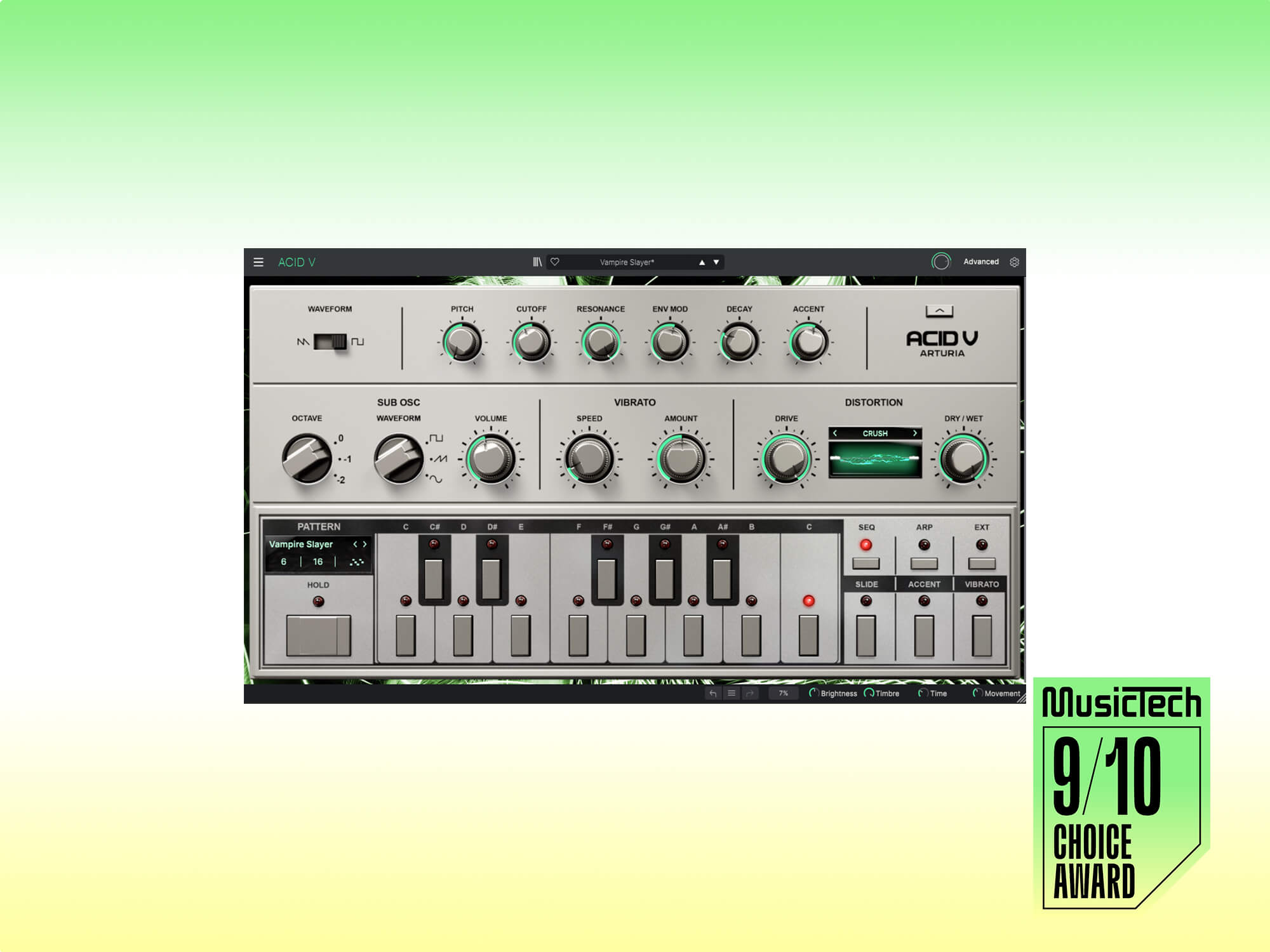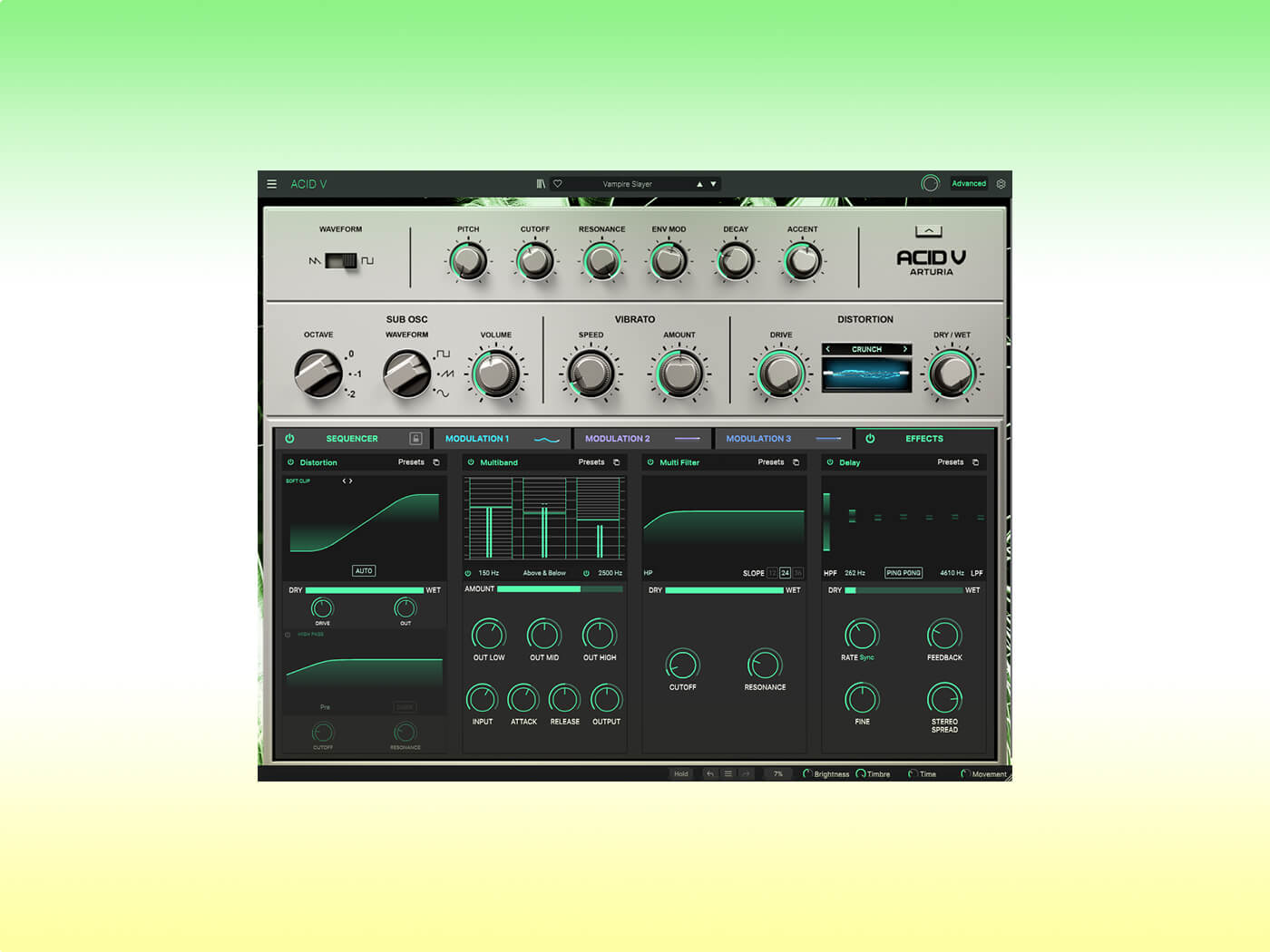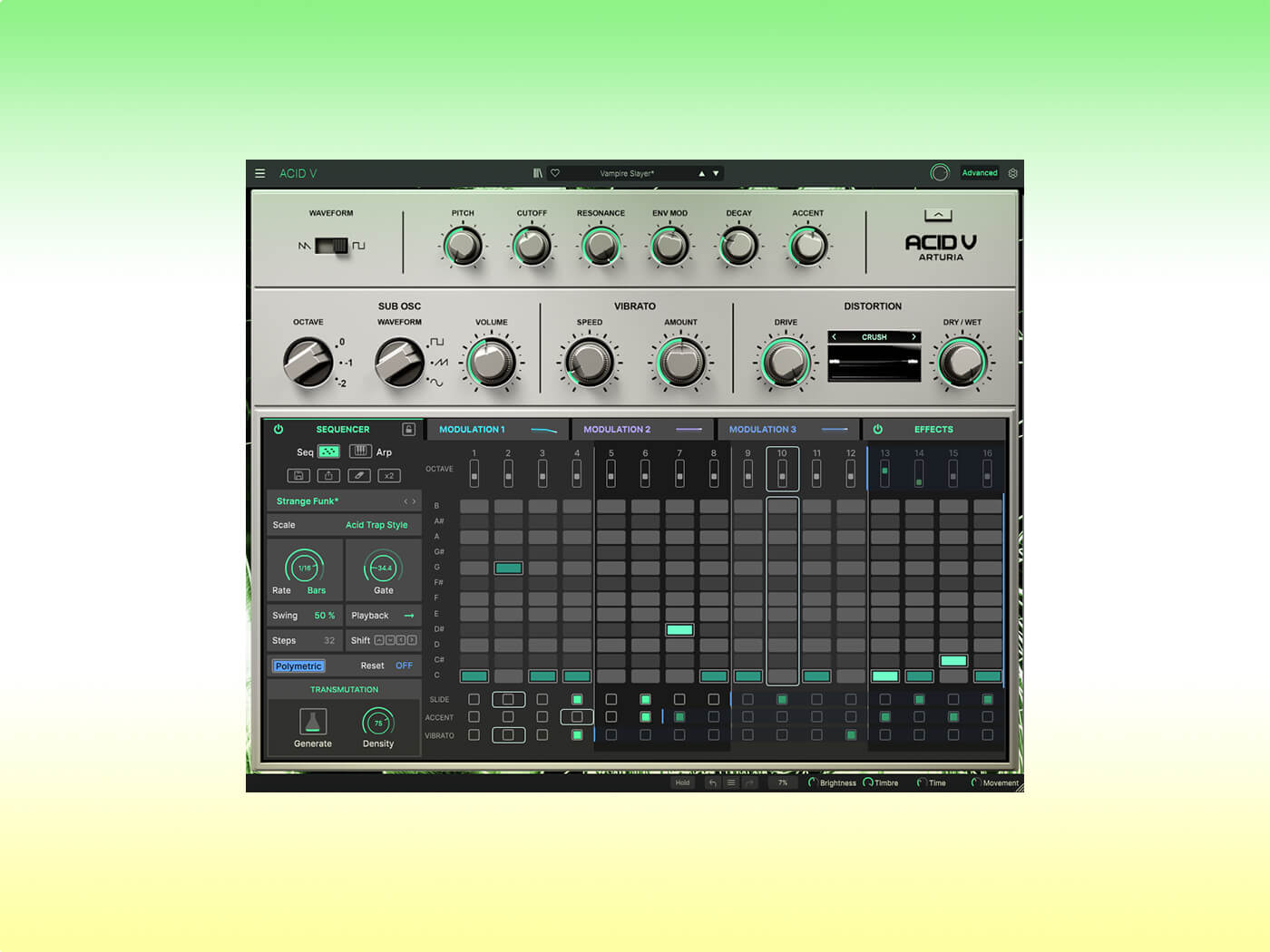Arturia Acid V brings a clutch of useful additions to the little silver box
There’s another TB-303 emulation in town. Does Arturia’s Acid V have what it takes to hold its acid own?

Arturia Acid V. Image: Arturia
Review Overview
Our rating
9
Our verdict
⊕ Extensive effects
⊕ Modulation section extends synthesis possibilities
⊖ Effects modules not swappable
The world of Roland TB-303 emulations is crowded, with plenty of both hardware and software recreations to satisfy your sonic lysergic cravings. Into this crowded room confidently strides Arturia with Acid V, the French company’s take on the little silver box. Arturia calls it a “corrosive bassline machine” and while its version has a very acidic pH value indeed, it also goes above and beyond gurgly expectations to deliver a contender for best software acid emulation.
Few synthesizers command the cult-like power of the TB-303. Originally released in 1982, the simple rhythm accompaniment device took off in the secondhand market thanks to Chicago acid house and later genres like acid techno. The 303’s combination of simple yet powerful synthesis architecture and unique on-board sequencer has resulted in countless psychedelic dance records, with every subsequent generation rediscovering its power and charm.
Arturia has captured that power and charm extremely well. When you first open Acid V, you’re greeted with a user interface that should be instantly familiar to any acid head. Basic controls, including the waveform selector (sawtooth or square) for the single oscillator, then cutoff, resonance, filter envelope mod amount, decay and accent run in a line across the top, while the bottom is occupied by the LED-festooned keyboard. This works differently in practice than the original hardware, but we’ll address that when we come to the sequencer.

From here on out, Arturia – as the company is wont to do – has gone to town adding new parameters to flesh out the original concept and make it more useful for modern productions. Most software emulations of the 303 have extras, for sure, but Arturia’s are especially welcome.
Take, for example, the sub-oscillator. With sine, square and ramp options at 0, -1 and -2 octaves, it’s perfect for bringing back the bass that high resonance settings will invariably steal. There’s also a comprehensive distortion section with vibrato, the latter of which works in tandem with the sequencer. We especially liked adding slow, wonky pitch drifts to our acid lines but fast, buzzy effects are possible too. Finally, there’s a hidden panel of pots for fine-tuning and modding the sound, all of which sound great.
Speaking of hidden panels, there’s plenty more to Acid V than meets the eye. Click on the Advanced button to reveal the sequencer, modulation, and effects sections. As with most other Arturia emulations, these significantly expand the power of the instrument, taking it from (let’s face it) what is essentially a one-trick pony into the realm of the unexpected.
Along with its sound, the 303 is largely famous for its unusual sequencer. With its accents and slides, it’s capable of all kinds of unusual percolations. On Acid V, Arturia has done away entirely with the hardware’s esoteric front panel programming – sorry purists and masochists – and shuttled everything to the dedicated sequencer panel. It’s deep, powerful and – most happily – intuitive. The programming lane is easy to use, and extras like scales, playback direction, gate length, and Transmutation for random sequences are all welcome. You can even uncouple the lane lengths with the Polymetric button and create unusual polyrhythms. Best of all, the sequencer responds to MIDI notes, transposing as you play.

While most will be content to leave it at that, Acid V also includes an arpeggiator mode for using it as a lead-style synthesizer. You can play it like a traditional MIDI instrument, if you need to, and even drag and drop sequencer data to your DAW for use with other instruments. Finally, should you be in a live environment, switch back to the front panel keyboard mode for on-the-fly note, accent and slide overrides. There are also four assignable macros to make live tweaking easier. Fantastic.
Arturia often includes a modulation section in its emulations and Acid V is no different. It’s this alone that really takes Acid V beyond your typical acid box. You get three modulation lanes, each with a variety of customizable curves, from basic ramps to complex steps. Assigning modulations is as easy as dragging the modulation animation to the destination parameter knob. Bright green crowns around the dials then provide high-vis modulation feedback. While we tend to think of acid lines as things to tweak live, setting up long and languorous modulation changes can be creatively transformative.
Additionally, Arturia has packed Acid V with a slew of useful effects from its various products, including a multiband compressor that can entirely mutate the sound. While you’re given four effects slots, it would have been nice for these to be swappable.
Ultimately, for a 303 emulation it all comes down to the sound and Acid V gets it right in all the right places. It’s squelchy and meaty and will certainly satisfy your acid cravings. It may not be as tweaky as D16 Group’s Phoscyon 2, with its unusual mod parameters, but Acid V more than makes up for this with imminently useful extras. The effects and modulation really extend the possibilities as well. All in all, a total winner and another triumph for Arturia.
Key features
- Gorgeous acid sound
- Hidden fine-tuning parameters
- Extensive modulation section
- Deep distortion for blistering acid techno sounds
- Sub oscillator and vibrato
- Advanced sequencer and arpeggiator
- Scales and randomisation extend sequencer possibilities
- MIDI drag and drop export
- Comprehensive effects pulled from Arturia’s other products